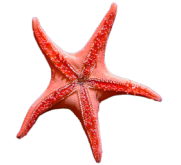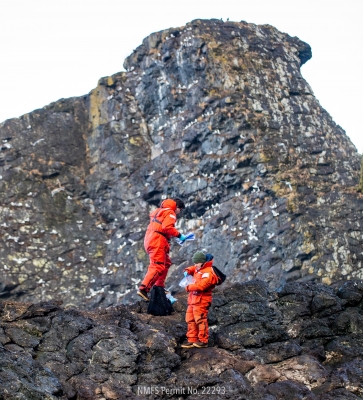New Scientific Publication: Changes in Steller Seal Lion Winter Diets Following the Pacific Marine Heatwave May 1, 2023
Extreme climate events are being experienced worldwide, and Alaska ecosystems, unfortunately, have a front-row seat. Heatwaves, droughts, floods, and hurricanes, are having profound environmental impacts, and are expected to continue for decades to come.One of these extreme climate events, called the Pacific marine heatwave, occurred between 2014 and 2016. During this time, water temperatures rose far above normal conditions and had expansive ecological impacts throughout the Gulf of Alaska and northeast Pacific Ocean.
Luckily, the Chiswell Steller Sea Lion Remote Video Monitoring team (the ASLC Chiswell team) has been monitoring the Endangered population of Steller sea lions for nearly 25 years — long before the Pacific marine heatwave occurred. This western population of Steller sea lions was listed as Endangered under the U.S. Endangered Species Act in 1997 following a major population decline. The ASLC Chiswell team has monitored this population since 1998 and has seen a general increase in the population over the years until 2016. The ASLC Chiswell team conducts multiple population surveys each year in the area around Resurrection Bay and monitors the Steller sea lion rookery called Chiswell Island through remote video cameras controlled at the Center.
The population data collected through the Pacific marine heatwave showed a continued increase in the population through 2015. The peak impact of the heatwave occurred during the winter of 2015 and into 2016, and the Chiswell team began to see significant declines in pups and adults in the summer of 2016. Changes in food availability likely played some role in the decline. Dr. John Maniscalco, Ph. D. — a lead scientist at the ASLC — recently published a peer-reviewed article in Global Ecology and Conservation that looks at how the Pacific marine heatwave could have affected the winter diets of the Endangered population of Steller sea lions in Alaska over this time frame.
Winter is considered a critical time for Steller sea lions as it is likely the most energetically challenging time of the year. In addition to regulating their body temperatures in freezing Alaskan waters, adult female sea lions can be both lactating and pregnant with new pups, which they will birth in the coming summer. Limited food availability during the winter months could have dire outcomes for adult females, leading them to abort growing fetuses, wean their pups too early, or put their own survival at risk.
Winter is also a high-risk season for scientists, as harsh and unpredictable weather at sea makes regular surveys logistically challenging, if not impossible. So how do scientists find out what sea lions are eating during this critical time period?
The answer lies not in the sea lions, but in what they leave behind: scat samples.

Continue reading the full update on the ASLC blog: https://stories.alaskasealife.org/2023/05/01/changes-in-ssl-winter-diets/



